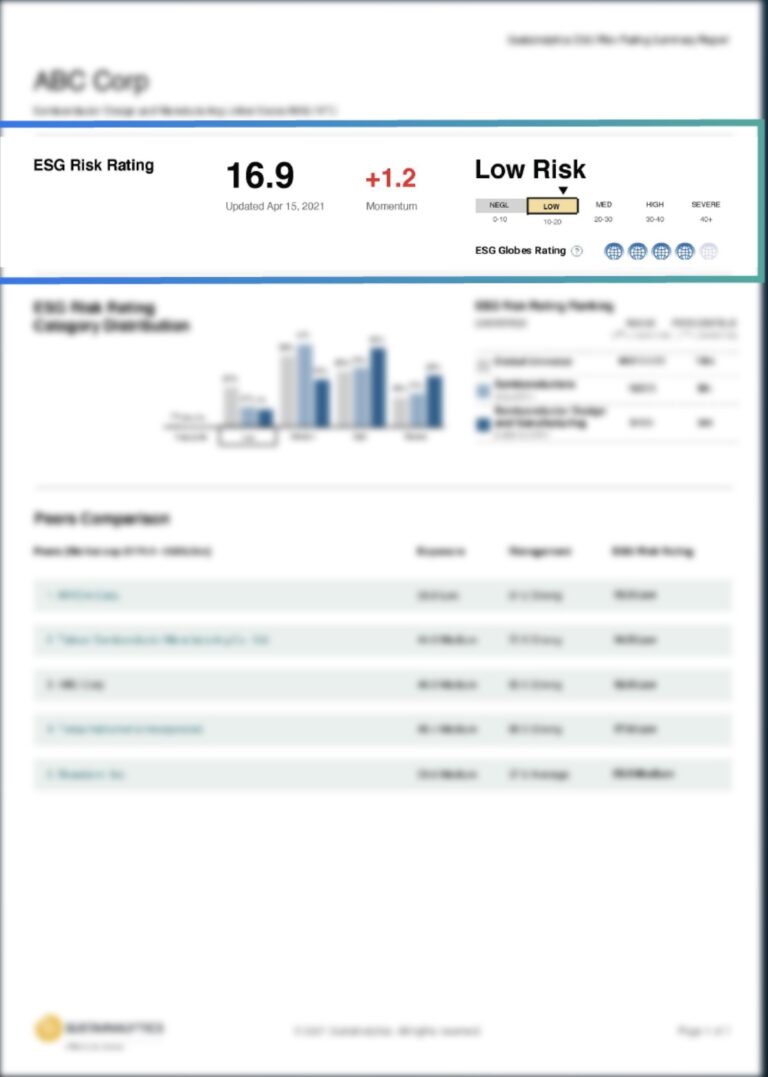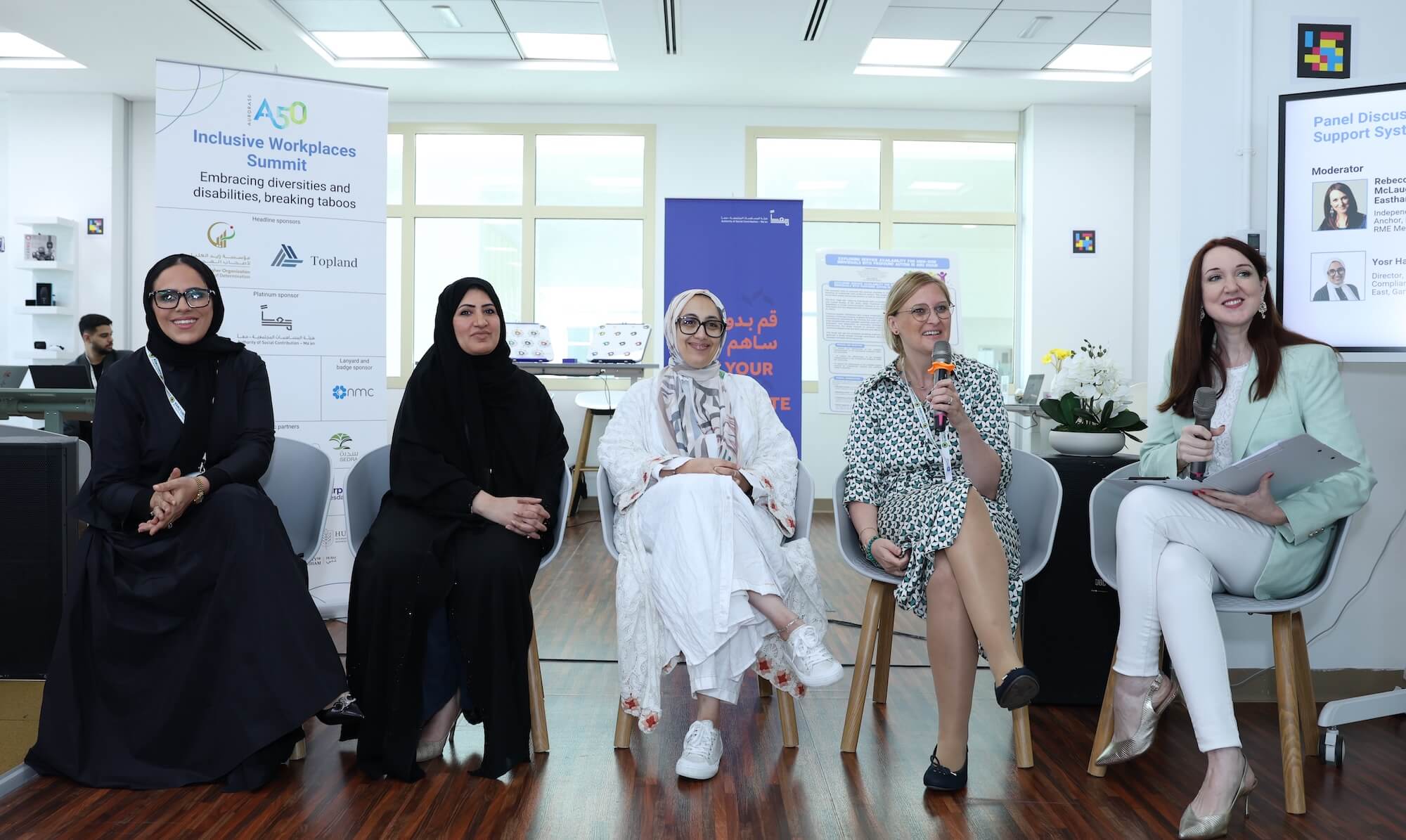MSCI’, meanwhile uses a letter scale from AAA (leaders) to CCC (laggards), directly correlated to scores in the ‘E’, ‘S’’ and G’ dimensions:
- leader – AAA (571-10.000)
- leader – AA (7.143-8.570)
- leader – A (714-7.142)
- average – BBB (286-5.713)
- average – BB (857-4.285)
- laggard – B (429-2.856)
- laggard – CCC (000-1.428).
How do I check individual company ESG ratings?
How does ESG fit with diversity and inclusion?
Diversity, equity and inclusion (DEI) metrics – also known as DE&I, D&I, EDI and DEIB -are becoming increasingly important in ESG ratings as investors place more emphasis on social responsibility practices.
Companies that prioritise diversity, equity, and inclusion are seen as more attractive to socially responsible investors, which can lead to increased investment and improved ESG ratings.
Larry Fink, CEO of global investment management firm BlackRock (which has put over $1 trillion of its $9 trillion of assets under management in ESG-focused products), wrote in his 2018 annual letter to CEOs: “To prosper over time, every company must not only deliver financial performance, but also show how it makes a positive contribution to society.” In 2019 he further stated that “profits are in no way inconsistent with purpose – in fact, profits and purpose are inextricably linked”.
DEI metrics that are factored into ESG ratings include the diversity of a company’s board and leadership, employee demographics, and policies and practices related to diversity and inclusion.
This is why large-scale companies such as
ADNOC and
EGA say that diversity drives business performance as well as being the “right thing for society”.
1. Board composition
The diversity of a company’s board of directors (gender, age, race and ethnicity) is often seen as a proxy for the company’s commitment to DEI.
Boards with more diverse members are more likely to have a better understanding of the needs of different stakeholders, and they are also more likely to make decisions that are in the best interests of all shareholders.
In PwC’s annual corporate directors survey in 2021, 64 percent of nearly 800 board directors surveyed said that ESG was linked to their company strategy. Yet only a quarter said the board understood ESG risks well.
Surveyed directors also said that ESG was the topic investors most wanted to discuss with company shareholders.
2. Employee representation
The diversity of a company’s workforce – demographics such as gender, nationality, age, people of determination – is another important factor in ESG ratings.
Companies with more diverse workforces are more likely to be innovative and creative, and they are also more likely to be able to attract and retain top talent.
3. Pay equity
Pay equity is another important aspect of DEI. Companies that pay their employees fairly, regardless of race, gender or other personal characteristics, are seen as being more sustainable and ethical.
4. Workplace culture
The culture of a company’s workplace is also important in ESG ratings. Companies with a positive and inclusive workplace culture are more likely to have happy and productive employees, which can lead to improved financial performance.
In addition to these factors, ESG ratings may also consider a company’s policies and practices related to DEI, such as its commitment to hiring and promoting women and minorities, its diversity training programmes, and its policy on discrimination.
What companies have improved their ESG ratings with DEI?
1. Google
Google aims to improve leadership representation of under-represented groups by 30 percent by 2025. In 2022, some 37.5 percent of Google’s worldwide hires were women, compared to 33.7 percent in 2021.
It made equity a core part of all managers’ responsibilities and ran inclusive hiring training for 10,000 managers in 2021, doubling its reach over the last three years.
It also built a ‘stay and thrive’ team to offer tailored support to employees from under-represented communities and ran its first autism-specific training for 350 Google Cloud managers.
Google (Alphabet)’s MSCI ESG rating has improved from BBB- in 2018 to A in 2023. It is rated 24 (medium) by Sustainalytics (August 2022).
2. Intel
Intel has 45 Employee Resource Groups (ERGs) and Leadership Councils (LCs).
Some 33 percent of its board of directors is female and 28 percent of all global employees – 19 percent at both leadership and executive level.
It achieved global gender pay equity in 2019. By 2030 it wants to double the number of women and minority numbers in senior leadership roles.
MSCI has rated Intel AA in 2021 and 2022; it was previously an A rating. It is rated 17 (low) by Sustainalytics (August 2022).
3. Microsoft
In 2021, the company announced that it would be investing $150 million in DEI initiatives over the next five years.
It reports data on workforce exits, reports on pay equity inside and outside the US and has women in more than 30 percent of its worldwide workforce.
MSCI improved from BBB- in 2018 to AAA in 2019 and has remained there until 2023, although it is rated 15 (low) by Sustainalytics (August 2022).
4. Pfizer
Pfizer has an independently reviewed policy for equal pay and, in 2019, set goals for 47 percent of the workforce to be female and for 32 percent of executive roles to be held by minorities.
In 2020, women held 38 percent of roles at vice president level or above globally, up five percent in a year. Pfizer states that DEI is embedded in its ESG strategy.
Pfizer was promoted from a B to an A rating by MSCI in 2022. It is rated 25 (medium) by Sustainalytics (August 2022).
5. Salesforce
Salesforce has been committed to DEI since its inception.
Salesforce has a commitment to hiring 50 percent women and under-represented minorities by 2025, has allocated $16 million toward equal pay initiatives and established a racial equality and justice task force.
It holds an AA MSCI ESG rating, although this has dropped from its 2019 AAA; it is rated 13 (low) by Sustainalytics (August 2022).
Why does ESG matter to investors?
According to a 2023 report by the Global Sustainable Investment Alliance (GSIA), sustainable investments totalled over $30.3 trillion – that’s more than a third of all assets in five of the world’s biggest markets.
Global investment management firm BlackRock has been a pioneer in ESG investing. Of its $9 trillion in assets under management, over $1 trillion are ESG-focused assets.
By investing in companies with strong ESG practices, investors mitigate risk such as reputational risk, regulatory risk and supply chain risk.
For instance, a company with a poor environmental record may be more likely to face regulatory fines or lawsuits; one with weak corporate governance could be susceptible to fraud and corruption.
Investors may also improve their returns: the GSIA’s 2022 report found that ESG-focused funds had outperformed conventional funds in the previous five years.
ESG investing is becoming increasingly popular, and investors often want to invest in companies that align their values and make a positive impact.
Are ESG disclosures required?
ESG ratings are not required in all countries in the Middle East and North Africa (MENA) region. However, there is a growing trend towards mandatory ESG reporting in the region.
For example, the UAE’s Abu Dhabi Securities Exchange (ADX) and Dubai Financial Market (DFM) now require public joint stock companies listed on their exchanges to disclose ESG information.
The lack of mandatory ESG reporting requirements in some countries in the MENA region may be due to a number of factors, including:
- the region’s relatively young and developing capital markets
- the lack of a strong regulatory framework for ESG reporting
- a lack of awareness of the importance of ESG among investors and companies.
Despite the lack of mandatory ESG reporting requirements, many companies in the MENA region are voluntarily disclosing ESG information.
Overall, the trend towards mandatory ESG reporting is likely to continue in the MENA region, which will help to improve the transparency and accountability of companies in the region.
Who invented ESG?
The term ESG was first coined by the United Nations Environment Programme Finance Initiative (UNEP FI) in a report published in 2005.
The report called for the development of a framework for assessing the environmental, social, and governance (ESG) performance of companies.
Who gives ESG ratings and sets ESG standards?
There is no single governing body for ESG ratings.
However, there are a number of organisations that are working to develop standards and best practices for ESG ratings, such as the Global Reporting Initiative (GRI) and the Sustainability Accounting Standards Board (SASB).
How does ESG fit with other terms I hear – CSR, sustainability, climate risk, SDGs and VSG?
In general, ESG is a broader term than CSR. ESG encompasses all aspects of a company’s sustainability performance, while CSR is more focused on the company’s social responsibility initiatives.
Sustainability is the overarching goal of ESG and CSR. It covers the ability of a company to operate in a way that meets the needs of the present without compromising the ability of future generations to meet their own needs.
Climate risk is a specific type of risk that companies face due to climate change.
SDGs stands for Sustainable Development Goals. They are a set of 17 goals that were adopted by the United Nations in 2015. The goals are designed to end poverty, protect the planet, and ensure prosperity for all. Companies can align their sustainability efforts with SDGs.
VSG stands for Value-Based Sustainability. VSG is a newer framework for measuring sustainability performance that goes beyond ESG to include factors such as customer satisfaction, employee engagement and innovation.
What is greenwashing in ESG?
Greenwashing in ESG is when a company makes misleading or unsubstantiated claims about its environmental, social and governance (ESG) performance, perhaps by:
- using vague or ambiguous language – e.g. terms like ‘sustainable’ or ‘ethical’ without providing any specific information about what those terms mean
- highlighting positive ESG aspects while downplaying negative ones
- making false or misleading claims, such as being carbon-neutral.
As consumers are willing to pay more for ‘green’ products, greenwashing can be lucrative.
The risks of greenwashing and false advertising are not only financial but also include reputational damage and loss of business.
To mitigate these risks, some organisations are creating staff roles such as chief sustainability officers (CSOs) to manage their ESG programmes.
About Aurora50’s DEI initiatives
From first-time managers all the way to the boardroom, Aurora50 develops inclusive leaders and environments, finding solutions to your
DEI goals.
Aurora50 was co-founded by Sheikha Shamma bint Sultan bin Khalifa Al Nahyan and Diana Wilde in 2020 with a powerful vision: to achieve gender balance in the workplace.
A UAE-based social enterprise, our first, successful initiative was to increase the number of women on boards in the UAE through the
Pathway accelerator.
We have now
expanded our focus to support listed corporations, large private organisations and high-growth businesses alike with all their DEI needs.
NOORA is Aurora50’s network for corporate women managers, while
The Inclusion Summit brings together hundreds of C-suite executives and board directors in MENA’s largest cross-industry DEI event.











